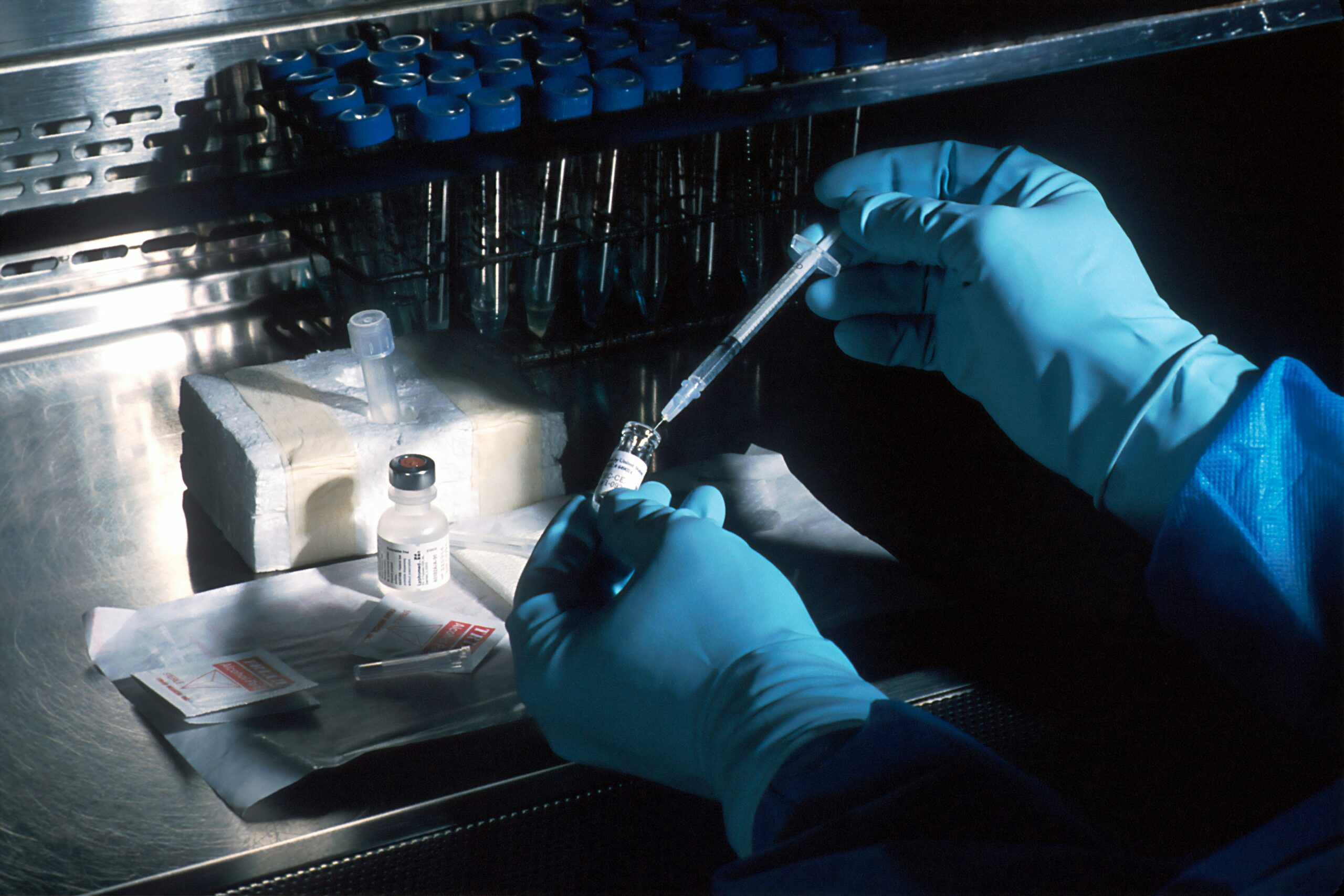Abeona Therapeutics Inc. (NASDAQ:ABEO) is a clinical-stage and now commercial biopharmaceutical company pioneering the development of transformative cell and gene therapies for patients suffering from serious and rare genetic diseases. Headquartered in Cleveland, Ohio, Abeona’s mission has always been to bring curative therapies to conditions long considered untreatable. Its research and development are anchored in harnessing next-generation gene therapy technologies to address unmet medical needs in areas like dermatology, ophthalmology, and metabolic disorders. The company’s work represents a paradigm shift in precision medicine—using patients’ own cells or targeted viral vectors to replace or repair defective genes, thereby restoring normal biological function and improving long-term outcomes.
Abeona’s scientific foundation was built on the understanding that gene therapy holds the potential to offer durable, even permanent, relief for diseases caused by single-gene defects. With this conviction, Abeona established a fully integrated current Good Manufacturing Practice (cGMP) facility in Cleveland, capable of producing both research-grade and commercial-scale gene therapies. This in-house capability gives the company a strategic edge, allowing it to maintain control over quality, cost, and scalability while reducing reliance on third-party manufacturing partners—a critical advantage in the competitive biotech landscape. This vertically integrated infrastructure supports Abeona’s entire product pipeline, from early research through clinical development and commercial production, ensuring seamless transitions across all stages of therapeutic innovation.
At the forefront of Abeona’s success is ZEVASKYN® (prademagene zamikeracel), the first and only autologous, cell-based gene therapy approved for the treatment of wounds in both adult and pediatric patients with recessive dystrophic epidermolysis bullosa (RDEB), a devastating genetic skin disorder often referred to as “butterfly skin disease.” The approval and launch of ZEVASKYN marked a historic milestone—not only for Abeona but for the broader field of regenerative medicine—signaling the company’s transformation from a development-stage biotech into a commercial-stage leader in gene therapy. ZEVASKYN is produced using the patient’s own skin cells, genetically corrected to express functional collagen VII protein, and then reapplied as grafts to affected areas. This innovative process targets the root cause of RDEB, offering new hope for patients who previously had no effective treatment options.
The company’s focus on RDEB extends beyond scientific achievement; it also demonstrates Abeona’s patient-centric approach and ability to navigate complex clinical and regulatory pathways. Its U.S. operations include partnerships with leading hospitals and research centers, forming a growing network of Qualified Treatment Centers (QTCs) dedicated to administering ZEVASKYN to patients across the country. With the activation of top institutions such as Children’s Hospital Colorado, Lurie Children’s Hospital of Chicago, and Lucile Packard Children’s Hospital Stanford, Abeona is ensuring nationwide access to its therapy. Furthermore, strong reimbursement progress—achieving policy coverage from major commercial payers like United Healthcare, Cigna, Aetna, Anthem, and Blue Cross Blue Shield plans—has laid the foundation for sustainable commercial growth.
While ZEVASKYN anchors the company’s current revenue potential, Abeona’s research pipeline promises continued expansion. Its gene therapy program ABO-503, designed to treat X-linked retinoschisis (XLRS)—a rare inherited retinal disorder leading to progressive vision loss—has been selected for inclusion in the U.S. Food and Drug Administration’s Rare Disease Endpoint Advancement (RDEA) Pilot Program. This recognition allows Abeona to collaborate closely with the FDA on novel efficacy endpoints, accelerating clinical development and paving the way for faster regulatory approvals. The company is also leveraging its proprietary adeno-associated virus (AAV) platform to explore additional ophthalmic and metabolic disease indications, broadening its reach in gene therapy applications.
From a financial perspective, Abeona has entered one of the strongest positions in its corporate history. As of September 30, 2025, the company reported $207.5 million in cash, cash equivalents, restricted cash, and short-term investments—enough to fund operations for over two years, even before recognizing commercial revenue from ZEVASKYN. Research and development expenses declined as development programs transitioned into commercialization, while selling, general, and administrative (SG&A) costs increased appropriately to support the product launch. The company’s net loss narrowed dramatically to $5.2 million for Q3 2025 from $30.3 million in the prior year, reflecting efficient cost management and revenue optimization strategies. With this improved financial position, Abeona is well-prepared to execute its commercial rollout, advance its clinical programs, and invest in next-generation manufacturing and product innovation.
Abeona’s leadership, guided by President and CEO Vish Seshadri, has consistently emphasized disciplined execution, patient access, and long-term value creation. Under this strategic vision, the company has built a foundation that blends strong science, operational excellence, and commercial readiness. Its redefined focus on rare diseases allows Abeona to target high-value markets where gene therapy can achieve outsized clinical and economic impact. This combination of proven innovation, expanding infrastructure, and financial stability positions Abeona as a frontrunner in the global gene therapy revolution—poised to deliver transformative results for patients, physicians, and shareholders alike.
A Commercial Gene-Therapy Company on the Cusp of Breakthrough
Abeona Therapeutics Inc., trading on the NASDAQ under ticker ABEO, is fast emerging as one of the most compelling growth stories in the rare disease and gene therapy space. With a fully integrated manufacturing facility in Cleveland, Ohio, and a commercially approved product in ZEVASKYN® (prademagene zamikeracel) — the first-and-only autologous cell-based gene therapy for wounds in adults and pediatric patients with recessive dystrophic epidermolysis bullosa (RDEB) — the company has shifted from development to commercialisation. The background of Abeona is rooted in targeting severe genetic disorders with high unmet need, and its vision is anchored in delivering transformative therapies that generate durable value. This foundational positioning alone differentiates it from many early-stage biotech names still years away from earnings.
Strong Financial and Operational Signals in Q3 2025
In its third quarter ending September 30, 2025, Abeona reported a cash, cash equivalents, restricted cash and short-term investments balance of approximately US$207.5 million, which management expects to fund operations for more than two years even without initial meaningful revenue from ZEVASKYN. The company reduced its R&D spending to US$4.2 million in the quarter (versus US$8.9 million same period previous year), and operating expenses reflect a realignment from pure development mode to commercial-launch mode. Meanwhile, SG&A increased to US$19.3 million as the company built the commercial infrastructure around ZEVASKYN. Despite ongoing investment, the net loss narrowed to US$5.2 million, or about US$0.10 per basic and diluted share — a marked improvement from a US$30.3 million loss a year earlier (US$0.63 per share). These metrics underscore that Abeona is reducing risk, tightening operations, and positioning for launch scale.

CHECK THIS OUT: Corcept (CORT) Skyrockets 1,534% in 10 Years and Immuneering (IMRX) Reports 86% 9-Month Survival in Pancreatic Cancer.
ZEVASKYN Commercial Launch: Early-Momentum in Rare Disease
Abeona’s lead commercial programme, ZEVASKYN, is central to the bullish thesis. While the first anticipated patient treatment shifted into 4Q 2025 due to optimisation of a rapid sterility release assay, the delay is strategic and aimed at ensuring manufacturing quality — not a demand failure. As of the update, Abeona had already received 12 product order forms (ZPOFs) from treatment centres and identified approximately 30 eligible patients across its initial Qualified Treatment Centers (QTCs). The activation of three QTCs – including Children’s Hospital Colorado, Lurie Children’s Hospital of Chicago and Lucile Packard Children’s Hospital Stanford – signals that the commercial footprint is in place. In addition, payer coverage momentum is strong: major commercial payers covering about 60 % of U.S. RDEB patients have policies in place and the U.S. Centers for Medicare & Medicaid Services (CMS) has assigned a permanent HCPCS J-code (J3389) for ZEVASKYN effective 1 January 2026. These operational milestones suggest a launch platform capable of generating meaningful revenue and setting the stage for long-term growth.
Broader Pipeline and Rare Disease Platform Strength
Beyond ZEVASKYN, Abeona is advancing a diverse and high-potential pipeline in rare genetic and ophthalmic disorders. Its ABO-503 gene therapy for X-linked retinoschisis (XLRS) has been selected for the U.S. Food & Drug Administration (FDA) Rare Disease Endpoint Advancement (RDEA) Pilot Programme — offering enhanced agency interaction and accelerated path to approval. The company also expanded its leadership team with the appointment of Dr. James A. Gow, Senior Vice President and Head of Clinical Development & Medical Affairs, signalling readiness for commercial scale. While ZEVASKYN represents near-term commercialisation, the pipeline offers medium-term upside that could further drive multiple re-rating.
Valuation, Investor Opportunity and Re-Rating Potential
From an investment-perspective, Abeona’s current price (in the low-single-digit to low-teens USD range) likely reflects the historical development-stage status of the company. But the combination of commercial readiness, strong cash runway, narrowing losses, and a leading product in a high-value rare disease market suggests significant upside. Launching a first-in-class therapy like ZEVASKYN in RDEB – a disease where the standard of care is limited – provides not only high margin potential but also an opportunity for premium pricing and sustainable growth. If the company executes commercial rollout and begins recognising revenue, the stock could be re-rated from speculative biotech to growth commercial therapeutics company.
Key Catalysts Ahead: What Could Drive the Upside?
Multiple catalysts could accelerate Abeona’s breakout. The initiation of first patient treatments for ZEVASKYN in 4Q 2025 is pivotal: once dosing begins, revenue recognition, treatment throughput, and payer reimbursement will become visible. The ramp-up of QTC network and expansion to additional treatment sites will widen access and scale. Results from pipeline programmes like ABO-503 and further manufacturing scaling or partnership announcements could provide further momentum. Also, sequential financial quarters showing narrowing losses and eventual profitability will reinforce the investment story. The cash runway of over two years gives the company the flexibility to execute without immediate dilution, an attractive feature for investors.
Risks & Execution Imperative
Even in a bullish thesis, execution risks must be borne in mind. The shift of first treatments into 4Q 2025 introduces a timing risk — any further delays could push revenue recognition into 2026 and impact investor sentiment. Manufacturing and supply-chain risks are present in personalised cell therapies like ZEVASKYN. Reimbursement hurdles and real-world utilisation remain key to unlocking commercial success. Finally, while the pipeline is promising, the proof will come through regulatory approvals and clinical milestones, which carry inherent uncertainty.
Conclusion: Abeona Therapeutics (ABEO) is Poised for Growth
In conclusion, Abeona Therapeutics (NASDAQ: ABEO) stands at a major inflection point. With cash in excess of US$200 million, a commercially ready product in a high-unmet-need rare disease, an activated treatment-site network, and a pipeline of next-generation gene therapies, the company is transitioning from promise to performance. If the commercial launch of ZEVASKYN proceeds as planned and the pipeline advances, Abeona may move from development-stage biotech to growth commercial therapeutic company — offering investors the potential to capture a rare combination of innovation, scale, and valuation re-rating.
READ ALSO: Tiziana (TLSA) Surges 143% in 2025 and Immuneering (IMRX) Reports 86% 9-Month Survival in Pancreatic Cancer.







